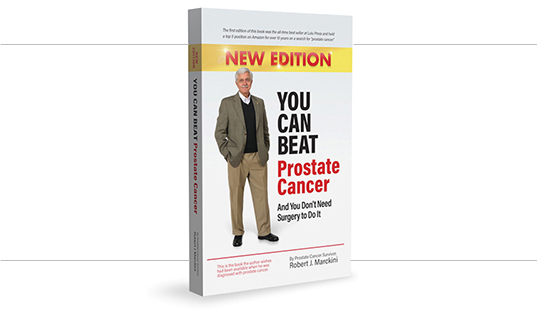
Dear Members (a note from Deb Hickey):
I'm deeply touched by the outpouring of support and empathy I've received from all of you regarding my struggles with corneal neuropathy. Your words have genuinely touched my heart, reminding me that I'm not alone on this journey. From longtime friends to newfound connections, your kindness has made a difference. Thank you.

As Mother’s Day approaches, I can’t help but reflect on the incredible woman who shaped me into who I am today. My mother’s unwavering love and support have been a guiding light throughout my life.
She was there for every scrape and bruise, comforting me with open arms and a box of tissues. Her gentle touch and soothing words healed both my physical wounds and my spirit. Even simplest gestures, like clean bed sheets and a warm meal, were infused with her love and attention to detail.
She was endlessly patient, even in the face of my childhood antics and nightly requests for her to read my favorite book, “Alexander and the Terrible, Horrible, No Good, Very Bad Day.” When she got to the last page, she always laughed like she was reading it for the first time.
My mother's presence in my life is a treasure beyond measure, and I am forever grateful for her wisdom, love, and affection.
Thank you for everything, Mom. Happy Mother’s Day.

This month’s “Special Segment” is a partial recap of the annual National Proton Conference that took place last month at the Hilton Boston Park Plaza with more than a record 300 attendees. We include highlights from a select few sessions that we think will be of interest and value to our members.
This month, we also cover several important studies. The first study suggests that prostate cancer cases could double from 375,000 in 2020 to nearly 700,000 by 2040, and annual deaths are predicted to rise by 85 percent. The second study, a large randomized trial that includes 600,000 men, shows that a new prostate cancer screening tool can detect a considerable number of aggressive cancers. In the third study, researchers report that saffron, a spice and flavoring ingredient, has potent anti-cancer effects on prostate cancer cells.
In our “Flashback” article, we report on a study that found darker colored fruits and veggies have stronger cancer-fighting properties than their lighter colored counterparts. In our “Health” section we tell you the best 5 supplements for men, according to Forbes Health. Don’t forget “On the Lighter Side,” either. Is it just me or are some of these getting funnier?
Next month we hope to begin a series of articles on three extraordinary breakthrough technologies being pioneered at Loma Linda University Cancer Center. We’re very excited about these initiatives and their potential to destroy the most pervasive and deadly diseases.
We welcome any suggestions you have on improving the value of the BOB Tales to our members. Please send your feedback to [email protected].
Deb Hickey
P.S. You may think I’m lying about retrieving the mail and finding the denial reversal letter while I was on the phone with the infusion Pharmacy Lady, but it’s true!
*To print the BOB Tales newsletter or view the newsletter with a larger font size, click here for the PDF file.

- Prostate Cancer Cases Could Double by 2040
- New Screening Method Selectively Detects Aggressive Prostate Cancers
- Saffron's Powerful Impact on Prostate Cancer
- Special Segment: National Proton Conference, Boston, MA 2024 Recap
- Dark-colored Fruits and Veggies Fight Cancer
- The 5 Best Supplements for Men

Prostate Cancer Cases Could Double by 2040

A new study – the largest of its kind – suggests that the number of men diagnosed with prostate cancer worldwide could double to 2.9 million a year by 2040. Annual deaths are predicted to rise by 85 percent.
If the prediction is accurate, 330 men could be diagnosed every hour. And although the study suggests that deaths are also projected to increase – from 375,000 in 2020 to nearly 700,000 by 2040 – the true toll might be higher due to under-diagnosis, especially in low- and middle-income countries. Furthermore, aging populations and increasing life expectancy will lead to higher numbers of older men in the coming years which will also inflate prostate cancer diagnoses.
The study, published in The Lancet as part of its landmark commission on prostate cancer, highlights the urgent need for action. As the main risk factors for prostate cancer – such as age and family history – can’t be avoided, it’s impossible to stop the surge in cases simply by making lifestyle changes. However, increased awareness of symptoms, access to testing, earlier diagnosis, and advancements in treatments could help reduce the burden and save lives.
Lead author on the study, Nick James, Professor of Prostate and Bladder Cancer Research at The Institute of Cancer Research, London, and Consultant Clinical Oncologist at The Royal Marsden NHS Foundation Trust, stresses the importance of planning and taking action now to address the impending surge in cases. He emphasizes the need for evidence-based interventions like better early detection methods and educational programs. Additionally, there’s a global demand for new and improved testing methods to avoid unnecessary treatments while detecting potentially lethal tumors earlier.
There’s also an imperative need for deeper research into prostate cancer among non-white populations to enhance detection and care within these communities. Prostate cancer research predominantly centers on white men, with the majority of studies conducted in high-income countries. However, black men, particularly those of West African descent, exhibit a heightened susceptibility to prostate cancer compared to white or Asian counterparts, yet the underlying causes remain unclear. Future studies – including participants that represent a diverse ethic makeup of the population – are needed.
New Screening Method Selectively Detects Aggressive Prostate Cancers
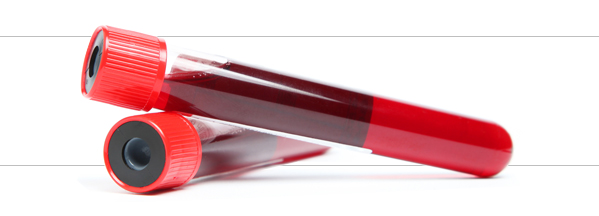
A large randomized trial, including 60,000 men aged 50-63, shows a new prostate cancer screening method can detect a considerable number of aggressive cancers.
The ProScreen trial examined the performance of a three-step screening protocol. The goal was to learn whether the new method would efficiently reduce mortality while lowering the likelihood of overdiagnosis.
The ProScreen screening method includes two blood tests and, if needed, magnetic resonance imaging (MRI) of the prostate. This differs from the traditional screening method, which relies solely on the prostate specific antigen test (PSA).
In the study, both blood tests were positive in 7 percent of the participants, prompting them to undergo an MRI. In about half of these men, a suspicious area was detected and a biopsy was taken.
Cancer was eventually found in about 2 percent of the participants. Clinically insignificant cancers were diagnosed in four in a thousand men.
According to the researchers, only preliminary evidence of the advantages of the ProScreen method is available. However, the results appear to indicate that major benefits could potentially be achieved in the future. The benefits can be estimated only after a 10-year follow up when the effects on prostate cancer mortality have been examined.
Saffron's Poweful Impact on Prostate Cancer

In a recent study, researchers performed in vitro (grown in a lab setting) analyses on prostate cancer cells treated with saffron, a spice and flavoring ingredient derived from the flower of Crocus sativus, commonly known as the “saffron crocus.”
Saffron has already shown promise in fighting various types of cancers and research has indicated its potential in fighting aggressive prostate cancer cells in mice. For this study, researchers wanted to evaluate how saffron may affect specific stages of prostate cancer development.
They found that saffron slowed down the growth of prostate cancer cells that respond to androgens by causing them to die. When these cells were treated with saffron, certain proteins involved in repairing DNA were significantly reduced. Additionally, saffron disrupted the normal process of DNA repair in these cancer cells over time.
As the dose of saffron increased, the rate at which the prostate cancer cells multiplied decreased significantly. Saffron also affected the activity of various genes involved in prostate cancer growth and survival.
Under the microscope, it was observed that after just one day of saffron treatment, the appearance of the cancer cells changed, and after two days, most of them stopped growing and started to break apart.
Saffron treatment also led to a decrease in the expression of a protein called Bcl-2, (which cancer cells need to survive), while increasing the expression of another protein called IL-2, which shows that the cancer cells are dying.
This increase in IL-2 levels may be due to saffron stimulating the immune system, leading to the activation of certain types of immune cells that can destroy cancer.
Saffron also reduced the levels of certain proteins involved in DNA methylation, a process that can contribute to cancer development. This was confirmed by analyzing prostate cancer tissue samples, which showed higher levels of these proteins compared to healthy tissue.
Overall, the study demonstrates that saffron has potent anti-cancer effects on prostate cancer cells, suggesting it could be used to complement standard treatments.

National Proton Conference
Boston, MA | April 6-9, 2024
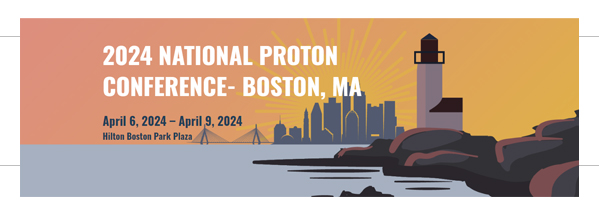
The 12th annual National Association for Proton Therapy Conference was held early last month at the Hilton Park Plaza in Boston, MA. The theme for this year was, Building on the Past, Transforming the Future.
Every year, the National Association for Proton Therapy (NAPT) gathers together leaders in the field of particle therapy with a robust agenda focused on emerging clinical research, operational efficiencies, insurance authorizations, and other issues critical to expanding access to this life-saving, life-changing cancer treatment.
Deb Hickey, along with more than 300 others, including physicians, physicists, administrators, and technologists, attended the four-day event, which featured more than 83 speakers that included distinguished proton therapy experts from Massachusetts General Hospital, MD Anderson, New York Proton Center, Penn Medicine, Mayo Clinic, and many others. An exhibition hall featured 17 industry partners and technology providers.
Conference Highlights
Following are highlights from a select few sessions. It includes information we think will be of interest and value to our members.
The Crucial Role of Scientific Research in the Evolution of Proton Therapy
This session was led by Dr. Jim Metz of Penn Medicine and Drs. Xing Liao and Steven Frank from MD Anderson. They discussed advanced delivery methods for proton therapy and informed attendees about several ongoing clinical trials, including a recent study comparing proton therapy to conventional photon radiotherapy (IMRT) in Stage 3 non-small cell lung cancer (NSCLC).
The standard treatment for eligible patients with unresectable (unable to be removed with surgery) Stage 3 NSCLC involves concurrent chemo-radiotherapy followed by adjuvant Durvalumab, a type of immunotherapy. For this study, researchers aimed to determine if proton therapy, compared to IMRT, could decrease hematological toxicity (a decrease in bone marrow and blood cells, which can lead to infection, bleeding, or anemia) and its impact on Durvalumab treatment.
They found that proton therapy reduced severe lymphopenia (blood doesn't have enough white blood cells called lymphocytes) and anemia (blood produces a lower-than-normal number of healthy red blood cells) in patients with unresectable NSCLC. Moreover, patients who underwent proton therapy felt better after their combined chemo-radiotherapy treatment and were more likely to receive the adjuvant Durvalumab.
Other ongoing clinical trials include a study of proton stereotactic body radiation therapy (SBRT) – five fractions delivered every other day – for prostate cancer and another trial of SBRT and hypofractionation using pencil beam scanning proton therapy for thoracic malignancies. Of course, the most anticipated studies are COMPPARE, comparing proton therapy to photon therapy for prostate cancer, and RADCOMP, comparing proton therapy to photon therapy for breast cancer.
Toward the end of the session, Dr. Frank touched on some of the disparities in patient access to proton therapy. In a recent cross-sectional study of more than five million patients who were eligible to receive proton therapy, black patients were less likely to receive proton therapy than their white counterparts. The difference was most pronounced for certain types of cancers where proton therapy was recommended, suggesting that simply increasing the number of proton therapy facilities may not completely solve racial disparities in access.
Additionally, there are disparities in clinical trial enrollment with black, Hispanic, younger, and female patients less likely to participate, and these disparities seem to be getting worse over time.
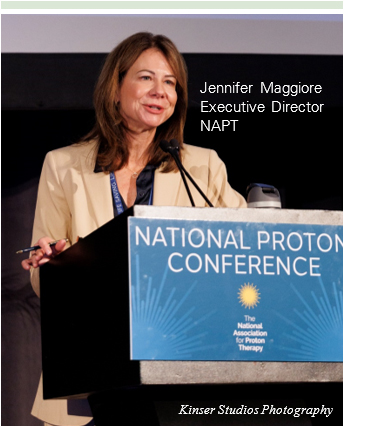
Pediatric Care: Harnessing Proton Power & Using a Team Approach in the Fight Against Childhood Cancer
In this session, Dr. Toruun Yock, director of pediatric radiation oncology at Mass General Hospital and Dr. Safia Ahmed, radiation oncology specialist at Mayo Clinic, spoke about the critical need for children with brain tumors to undergo proton therapy rather than conventional radiation.
Although more than 70 percent of pediatric brain tumor patients are long term survivors, radiation to healthy tissue affects neurocognitive and cognitive functions and ultimately, overall quality of life. The side effects of conventional radiotherapy in children are far worse than in adults because radiation treatment stunts the proper growth of bone, muscle, soft tissue, and even blood vessels.
The speakers discussed the advantages of using protons rather than photon radiotherapy, referencing a meta-analysis of 10 studies, which demonstrated that proton therapy improved most measures of neurocognition in patients compared with traditional radiotherapy. Another study showed protons were beneficial for neurocognition in patients with central nervous system malignancies. Overall, quality of life was shown to be better among patients who received proton therapy over conventional photon radiation therapy.
The good news is most pediatric patients are approved by their health insurers for proton therapy, and if they do need to appeal, the success rate is high. Having said that, the process for overturning denials takes time and usually involves letters and phone calls, and there may be multiple rounds of appeal before coverage is approved. A more streamlined approval process is badly needed.
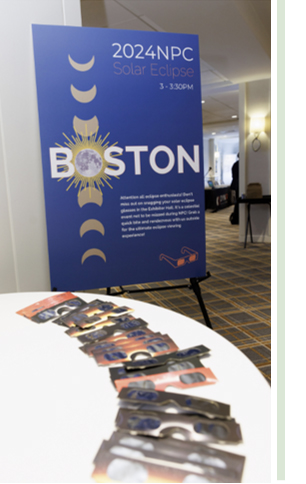
Prior Authorization Legislation and Litigation: Increasing Patient Access to Proton Therapy
Several speakers including Peggy Tighe, a principal in Powers Pyles Sutter & Verville’s legislative group focusing on healthcare lobbying and coalition building, provided an overview of prior authorization (PA) and explained the state of government in regard to PA.
PA is a process used by some health insurance companies to determine if they will cover a prescribed procedure, service, or medication. The problem with the PA process is that it interrupts patient care, diverts resources from patients, and complicates medical decision-making.
Interestingly, 90 to 100 percent of the time, PA is eventually approved, but while patients wait for approval, they often become sicker, requiring more expensive treatment. Serious conditions may have even worse consequences.
Fortunately, the American Medical Association (AMA) created a model bill and related issue brief that medical societies can use to begin efforts to address prior authorization in state legislative processes. The focus is on common sense reform of Medicare Advantage (MA) plans use of PA.
At one time, MA was supposed to provide the same benefits that Medicare was giving to patients. Instead, MA became “managed care,” run by for-profit medical insurers. The bill, “ The Improving Seniors’ Timely Access to Care Act,” aims to provide transparency and additional oversight to the MA program.
Optimizing Patient Care: Data Driven Insights into Non-Clinical Financial Needs
This session began with an introduction by Rahul Mahadevan, a former prostate cancer patient. During his treatment a few years ago, he recognized a problem among some of the patients who were opting to delay or skip treatment due to insufficient non-clinical support, such as the need for a ride to the hospital. This compelled Rahul to establish WiTT (“We’re in This Together”), a registry-based platform addressing the diverse non-clinical challenges – financial and non-financial – that some patients face during treatment. His primary objective was to alleviate the burdensome “daily living” challenges so patients could focus on their health. “I believe I got cancer for a reason,” Rahul said.
Dr. Isabelle Choi, a radiation oncologist with the New York Proton Center, a WiTT client, spoke about the ripple effect once a patient is diagnosed with cancer. It can spread to their emotional health, their ability to work, and their financial state. And she explained that asking for help can be very challenging; there are privacy issues, concerns about burdening others, shame, and guilt. The WiTT platform allows patients to ask for help in an indirect, nonjudgmental environment. Patients and/or their supporters can even invite family and friends to join.
Although initially centered on cancer, WiTT broadened its reach to encompass all patients in need of assistance, regardless of their medical condition. The ultimate goal of WiTT is to offer a lifeline to disadvantaged patients, offering support to facilitate their unique journeys.
Exploring the Future of Carbon Ion Radiation Therapy
Professor Dr. Eugen Hug, medical director and co-managing director at the MedAustron Ion Therapy Center in Austria, discussed the use of carbon ions in treating certain diseases. Carbon ion irradiation involves aiming charged carbon nuclei directly at a tumor. The particles are heavy and carry a lot of energy, which grants carbon qualities ideal for cancer treatment, as it offers enhanced physical dose dispersion and biological impact.
Dr. Hug talked about a few clinical trials underway including a study of carbon ions versus surgery and another using proton therapy and a carbon ion boost. He also talked about the potential to use carbon ions to stimulate the body’s immune response.
There are challenges in treating patients with carbon ion radiotherapy including the need for more medical evidence and the need for compact facilities.
“Carbons are where protons were 15 years ago,” Hug said.
In Closing
Above is just a small sampling of the events at the National Proton Conference in Boston. One of the great benefits of an event such as this is that it allows members of the proton community to immerse themselves in the latest innovations, network, share information, discuss challenges, and build relationships. And this year was no different.

When in the presence of some of the smartest and most caring medical and administrative professionals in the world, as was the case April 6 through 9, one can understand why the proton movement – despite the large number of obstacles we still face – is alive and well.
Thank you to NAPT executive director Jennifer Maggiore who somehow manages to outdo herself year after year. And thank you to the entire conference planning committee.
We look forward to next year’s conference in Philadelphia, PA!

We’ve been producing BOB Tales newsletters for 23 years. During this time we’ve published articles that many new members haven’t seen, and some older members may have forgotten. So, we periodically re-run articles from past BOB Tales. This one from September 2009 is titled:
Dark-colored Fruits and Veggies Fight Cancer

The darker the berry, the sweeter the juice, so goes the saying. But it turns out the darker berry or plum or grape, for that matter, the stronger the cancer-fighting properties.
Researchers conducting a recent study found that the compounds that give some fruits and vegetables their rich colors are powerful cancer deterrents. Evidence from laboratory experiments on rats and on human colon cancer cells also suggest that anthocyanins, the compounds that give color to most red, purple and blue fruits and vegetables, also slow the growth of colon cancer cells.
“These foods contain many compounds, and we’re just starting to figure out what they are and which ones provide the best health benefits,” said Monica Giusti, lead author of the study and an assistant professor of food science at Ohio State University.
The findings bring scientists a step closer to figuring out what gives fruits and vegetables their cancer-fighting properties.
3 Breakthrough Cancer-fighting Technologies in Development
Next month we hope to begin a series of articles on three extraordinary breakthrough technologies being pioneered at Loma Linda University Cancer Center. These initiatives have the potential of destroying today’s most pervasive and deadly diseases. The programs are in various stages of development with some exciting early results in clinical trials.
We have an opportunity to help LLUCC accelerate these efforts by providing funds to support research, staffing, and capital programs. We know our members will be amazed when we share information on these three initiatives. Stay tuned.

Giving Options
-
Online: Donate here. From the pull-down menu, choose where you’d like to direct your gift — 1) Proton Research through the James M. Slater Chair, 2) Proton Research through the Robert J. Marckini Chair, or 3) choose “Other” and specify “Cancer Center Vision” or another area where you’d like your gift directed in the space provided.
-
By Check: Make your check out to “LLUCC.” Specify where you’d like to direct your gift in the memo line — 1) Slater Chair, 2) Marckini Chair, 3) Cancer Center Vision or 4) write “unrestricted” so LLUH can use it where it’s needed most. Mail your check to: LLUH, Office of Philanthropy P.O. Box 2000, Loma Linda, CA 92354.
-
By Phone: Call Regina Joseph at 909-558-5010.

The 5 Best Supplements for Men

Maintaining a healthyful lifestyle involves a balanced diet and regular exercise. While food typically provides necessary nutrients, supplements can help bridge nutritional gaps. However, not all supplements are tailored to men’s specific dietary requirements. To identify the top supplements for men this year, Forbes Health sought guidance from doctors and health experts.
What to Look for in Supplements for Men
No matter your health goal, it’s important to prioritize products with clear ingredient lists emphasizing quality and potency. Be cautious of products making bold claims without scientific backing. Consider the following before purchasing supplements:
- Third party testing: Make sure the amount listed on the label matches what’s in the supplement. Third-party testing confirms accuracy and potency.
- Bioavailability: Some brands may use special methods to help your body absorb supplements better, making the nutrients more effective.
- Additives and fillers: Some supplements might contain fillers or preservatives, which are added to preserve or bind ingredients. Some consumers may have dietary restrictions or sensitivities to these ingredients.
- Reputation and trustworthiness: Look for certifications from respected regulatory bodies that independently test supplements for safety and quality.
- Pricing: Find a supplement that aligns with your lifestyle and budget. If you have questions about its nutritional value, consult a registered dietitian or nutritionist.
Top Supplements for Men in 2024
- Magnesium: Essential for over 300 bodily processes, including heart health and energy synthesis. Deficiency can lead to muscle cramps and low energy.
- Vitamin D: Crucial for bone health and immune function. Insufficient levels may impact sexual performance.
- CoQ10: Antioxidant that supports heart health and may improve sperm quality.
- Saw Palmetto: Used for prostate health, shown to benefit symptoms of benign prostatic hyperplasia (BPH).
- Zinc: Essential for DNA synthesis, immune health, and proper testosterone levels in men.
Supplements for men, like most supplements across the board, come in various forms and aim to provide additional nutrients that may be lacking in one’s diet. And while they can be beneficial for addressing specific health concerns, supplements should never replace a balanced diet and healthful lifestyle habits. Also it’s important to consult a healthcare professional before starting any supplement regimen.

You Can Beat Prostate Cancer: And You Don't Need Surgery to Do It - Second Edition
Amazon Ranking and Reviews
Bob’s book continues to make a huge difference in people’s lives, evident from the feedback received. It also remains in the No. 2 spot on Amazon’s list of more than 6,000 books on prostate cancer. It’s second only to Dr. Patrick Walsh’s book in terms of reader reviews, boasting an impressive 454 reviews across the first and second editions, averaging a five-star rating.
Following is an excerpt from the most recent Amazon review by a gentleman from Jackson, MS.

You owe it to yourself to read this book!
Up until May of 2023, I had read three books on prostate cancer, all written by urologists. My prostate cancer was diagnosed two years before in 2021 when I noticed my PSA had jumped from 2.5 to 3.5. My doctor didn’t seem concerned, but I was, and a biopsy proved me right. I had a Gleason score of 6. During the next two years my PSA continued to increase to 10.33.
A doctor friend of mine told me about Bob’s book and how it had helped another friend. I thought, now why do I need to read another book on this subject? I was ready to move on with some form of traditional radiation therapy.
But I ordered the book and began reading. Before long, I was convinced. I wanted proton therapy. My urologist said radiation treatments were all about the same, but the book convinced me otherwise. Therefore, after making the decision to go the proton route, I had to get the insurance part of it resolved. Since I was already 80, I decided to get on Medicare plus the F Supplement, and this took care of 100 percent of my therapy bill.
I began therapy at the UF Proton Center in Jacksonville, FL on Oct. 16, 2023, and concluded during Thanksgiving week, Nov. 22 (28 sessions). I had no side effects other than a bit of lethargy during the treatment. My experience overall was as good or better than I could have imagined.
…If it hadn’t been for Bob’s book I might be dealing with all sorts of side effects. Thanks for everything, Bob. You certainly helped me. I’d encourage anyone dealing with prostate cancer to please read this book. You’ll be glad you did.

Was Bob’s book helpful to you?
If Bob’s book was helpful to you and you’d like to help others find it on Amazon, please write a review. Book reviews help boost the book’s visibility within Amazon’s search results for users looking for information on prostate cancer treatments and/or proton therapy.
Proceeds from book sales are used to help fund our efforts and to support proton therapy research.

Last Month's Brain Teaser
From what can you take away the whole and still have some left?
Answer:
The word WHOLESOME.
Winner:
The March/April brain teaser winner is from Gainesville, FL and wishes to remain anonymous. His response read: The answer is “wholesome” just like me.

New Brain Teaser
Can you make a raw egg float exactly half-way up, in a glass of water?
Send your brain teaser answer to [email protected] for a chance to win a signed copy of Bob Marckini’s NEW second edition book, You Can Beat Prostate Cancer.

The Compliment
The wife steps out of the shower, looks at herself in the full-length mirror, and says to her husband, “I feel horrible. I look fat and ugly. Pay me a compliment!”
The husband replies, “Your eyesight is darn near perfect!”

More Humor
- I finished three books yesterday. And believe me, that’s a lot of coloring.
- What did our parents do to kill boredom before the Internet? I asked my 26 brothers and sisters, and they didn’t know either.
- Today, I melted an ice cube with my mind just by staring at it. It took a lot longer than I thought it would.
- Struggling to get your wife’s attention? Just sit down and look comfortable. • Just sold my homing pigeon on eBay for the 22nd time.
- I grew up with Steve Jobs, Johnny Cash and Bob Hope. Now there’s no jobs, no cash, and no hope. Please don’t let anything happen to Kevin Bacon.
- A shout-out to everyone who can still remember their childhood phone number but can’t remember the password they created yesterday. You are my people.
- Think you’re old and you’ll be old. Think you’re young, and you’ll be delusional.
 QR Code Scams
QR Code Scams
QR codes, or Quick Response codes, are popular for accessing information by scanning bar codes that lead to websites. While QR codes have legitimate uses like paying for parking or viewing menus, scammers also exploit them to trick people into visiting fake websites or downloading malware. Here’s how to stay safe:
- Verify the source: Make sure the QR code is from a trusted source, like the official website it claims to represent.
- Inspect the code: Check the QR code for signs of tampering, unusual colors, or misspellings before scanning it.
- Be cautious: Avoid scanning unsolicited QR codes from unknown sources, especially via email or text messages.
- Watch for urgent requests: Be skeptical of urgent requests via QR codes, especially if they claim to be from government agencies like Social Security, as scammers often use fake QR codes to defraud people.
- Stay informed: Keep up to date on QR code fraud and scams by following trusted sources like cybersecurity blogs and official government websites.
QR codes are an easy and convenient way to get information but stay vigilant to avoid falling victim to scams.

The "Say Yes" Scam
The “say yes” phone scam, originally seen nearly a decade ago, is resurfacing, according to the Better Business Bureau (BBB). Scammers call and ask, “Can you hear me?” If you answer “yes,” they may use it to manipulate you into agreeing to a purchase or receiving more marketing calls.
The BBB believes these calls primarily originate from:
- Vacation/timeshare companies
- Extended warranty companies
- Computer antivirus programs
By saying yes, you may also unknowingly authorize a purchase, especially if they have your credit card details. Even if scammers don’t know who you are, you’ve essentially opted in to more marketing calls and are considered an active customer.
Keep an eye on your credit card statements!


Six Little Stories
1. Once all the villagers decided to pray for rain. On the day of prayer, all the people gathered, but only one boy came with an umbrella.
That’s FAITH.
2. When you throw babies in the air, they laugh because they know you will catch them.
That’s TRUST.
3. Every night we go to bed without any assurance of being alive the next morning, but still, we set the alarms to wake up.
That’s HOPE.
4. We plan big things for tomorrow despite zero knowledge of the future.
That’s CONFIDENCE.
5. We see the world suffering, but still, we get married and have children.
That’s LOVE.
6. On an old man’s shirt was written a sentence: I am not 80 years old; I am sweet 16 with 64 years of experience.
That’s ATTITUDE.
Have a happy day and live your life like the six little stories.
...When I was a child, I thought nap time was punishment. Now it’s like a mini vacation.
Low PSAs to all,
Bob Marckini and Deb Hickey
*Click here for the printable PDF version of this newsletter.
NO MEDICAL ADVICE: Material appearing here represents opin1ions offered by non-medically trained laypersons. Comments shown here should NEVER be interpreted as specific medical advice and must be used only as background information when consulting with a qualified medical professional.


